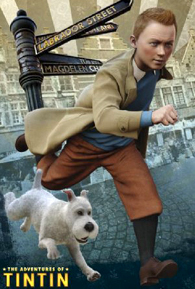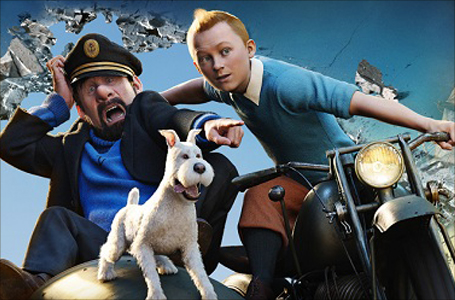
The mash-up of three different Tintin stories by three of screenwriters is far more coherent than expected, perhaps because they have collectively brought us Doctor Who, Shaun of the Dead, and Attack the Block. Their adaptation appropriately delivers a well-paced feature film that plays to cinematic sensibilities of the modern action genre – a factor in the film’s success given that The Secret of the Unicorn, from which the film’s main premise is borrowed, takes place entirely in Belgium and is almost a drawing-room detective story. Written during the Nazi occupation of Belgium, this instalment of Tintin’s adventures shied away from international adventures and political and social satire for the very first time in the series, focussing instead on pure mystery. We suspect that plot elements from The Crab with the Golden Claws and Red Rackham’s Treasure were introduced into this film adaptation to make up for the story elements that Herge excised in The Secret of the Unicorn.
While The Adventures of Tintin is cobbled together from various Tintin comics and then some, it does showcase the three periods of Herge’s art and their concerns with adventure, mystery, and foreign adventure – though sadly the political and social satire is missing here.
As a fan of the series, one may marvel at the storytelling acrobatics that the writers perform to deliver something familiar and yet new. As an animation geek, one may also marvel at the sheer technological wizardry involved in the production of this animated film, at how motion capture performances by live actors have been translated and then repainted over into animated characters, and in 3D at that.
The only weakness of this stunning film is perhaps unavoidable. Traditional animation relies on overacting, especially in voice acting, to match the drawn characters. This film might prove that with motion capture, one could get realistic, almost life-like moving animated characters who yet seem somewhat subdued in comparison to the voice work behind them.












 列印版本
列印版本










讀者回應
請先登入再使用此功能。